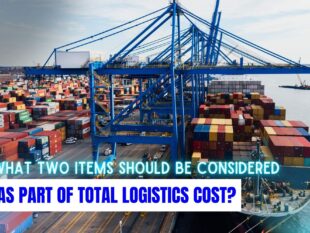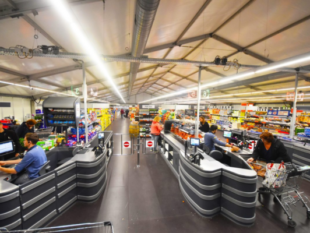Why Manufacturing Is Booming Again—And Who’s Actually Winning
by Arnab Dey Business Development 17 June 2025

Whenever I heard the word “manufacturing,” I could only imagine those tired factory towns, rusted equipment, and the jobs that disappear overseas without any sort of warning.
However, I recently came across some news that discussed the unusual shifts, or, more specifically, the rise of manufacturing, which was previously abandoned by industries.
The machines are working again! People are getting jobs in that industry! They are rebuilding the infrastructure!
Companies of all sizes are paying more attention to American-made goods, just as it was in 1985! The only additions are Wi-fi and robotics.
It’s not just nostalgia or political noise driving this shift. The numbers are changing. The infrastructure is rebuilding.
And while headlines still scream about layoffs in tech or inflation at the grocery store, there’s a quieter story brewing in small cities and industrial parks across the country. American manufacturing is making a comeback.
Not in the flashy, splashy way—this comeback has been steady, a little scrappy, and not without its hurdles. But it’s happening. And the winners aren’t always who you’d expect.
The Rise Of Manufacturing: Small Operations Are Outpacing The Big Guys
If you think the return of U.S. manufacturing is all about massive plants and multinational corporations planting flags, think again.
Some of the fastest growth has come from small to mid-sized businesses that figured out how to work lean, pivot quickly, and take advantage of local talent.
These aren’t legacy companies with bloated budgets and overpaid executives. These are family-run shops, precision tool companies, and custom fabricators.
These are the kinds of businesses that might not have survived the last offshoring wave but are now thriving under new conditions.
One key advantage of the rise of manufacturing? Flexibility. Larger operations often take months to make a decision that a nimble shop can make in a day.
Whether it’s customizing parts for a local contract or onboarding a new supplier in the future, smaller manufacturers can respond to changes in demand much more quickly.
That agility has become a serious competitive edge in a supply chain landscape where unpredictability has become the norm.
There’s also a growing movement of younger entrepreneurs entering the space, which wasn’t the case 10 or 15 years ago.
Instead of tech startups or consulting gigs, some are choosing hands-on work and local production.
The pandemic has shaken many assumptions about what it means to build something meaningful and profitable. Sometimes that means literally building something.
Reshoring Isn’t A Buzzword Anymore—It’s A Strategy
For years, the rise of manufacturing on U.S. soil was mostly a campaign slogan or a punchline, depending on who you asked.
However, companies that previously relied heavily on overseas production are now getting serious about “reshoring.” Not because of patriotism. Because of math.
If you are running a company and plan to have your products manufactured in the US, then I must tell you—it can be quite expensive.
On the other hand, the cost of doing business overseas is also increasing. Even for the industry experts, it has become difficult to justify.
The overseas manufacturing comes with a lot of drawbacks, such as:
- Shipping delays
- Geopolitical uncertainty
- Rising labour costs
Thus, the companies are realizing that local production can offer you something more, something that goes beyond the pricing: reliability.
Add to that the rising appeal of financial products like the manufacturing loan, which has made expansion more accessible to smaller shops trying to meet demand without gutting their cash reserves.
These loans have opened doors for business owners who would’ve once been locked out of traditional funding. Instead of cobbling together high-interest credit or playing chicken with their accounts payable, they’re able to invest confidently in equipment, staff, and space.
That’s a game changer for anyone trying to grow in a hurry without compromising control.
And it’s not just about costs or risk. Reshoring provides companies with the opportunity to differentiate themselves. “Made in the USA” actually carries weight again for consumers, and not just older generations.
Younger buyers, particularly those concerned with sustainability and ethical labor practices, are paying attention to where and how products are manufactured. It’s not just about price tags anymore. It’s about trust.
Supply Chain Nightmares Created New Opportunities

The global supply chain meltdown wasn’t fun for anyone. But if you’re running a manufacturing business in the U.S., it did open up some unexpected doors.
Disrupted ports and backlogged containers led customers to seek local alternatives. And local producers? They stepped up.
Suddenly, buyers were open to trying a new supplier simply because the one they’d used for years couldn’t deliver. In some cases, this meant a trial run turned into a permanent partnership.
These one-time stopgaps became full-time contracts. And local manufacturers didn’t need to be perfect—they just needed to be available, reliable, and good enough to get the job done.
It’s also worth noting that logistics has gotten smarter. With better tracking, automation, and planning tools now available to even small operators, many manufacturers have been able to maintain lean operations while reducing the need for excessive inventory. Less waste, fewer delays, and more control. It’s not glamorous, but it works.
Creative Financing Is Making Expansion Possible
Traditionally, growing a manufacturing business meant long waits for capital, red tape, and often a frustrating disconnect between what banks understood and what the business actually needed.
That’s starting to shift. With more alternative lending options on the table—and a growing recognition that the rise of manufacturing is back in style—financing is less of a brick wall than it used to be.
One standout tool in this area is business cash advances, which offer upfront capital in exchange for a percentage of future revenue.
While not perfect for every company, they’ve become a lifeline for businesses with seasonal fluctuations or irregular cash flow.
Unlike traditional loans, they don’t come with rigid payment structures, which means manufacturers can grow without being strangled by monthly minimums during slow months.
That flexibility has enabled smaller shops to purchase machinery, expand their facilities, and hire skilled workers without waiting six months for bank approval.
And while there are always risks associated with any kind of financing, the ability to act quickly—especially in a time-sensitive industry—can be the difference between growth and mere survival.
Skilled Labor Is Still A Wild Card
While the energy around manufacturing is clearly shifting, there’s still one big question mark: labor.
Even as jobs return, there aren’t always enough people with the right skills to fill them. That’s been a sticking point for companies trying to scale.
You can buy a million-dollar machine, but if no one knows how to run it, it’s not doing much for you.
That said, there are promising signs. More trade programs are emerging, often in collaboration with local businesses.
And younger workers—especially those burned out by remote desk jobs or disillusioned with college debt—are starting to look at skilled trades in a new light. It’s not a flood yet, but the tide seems to be turning.
And guess what? The companies are focusing on training their own workers! I think it’s better than waiting for the perfect resume to land.
That means more apprenticeships, more hands-on education, and more pathways for growth.
The people coming in aren’t always industry lifers, but they’re eager to learn, and that counts for a lot.
Where This All Might Be Going
American manufacturing isn’t roaring back in some giant, fireworks-filled return. It’s creeping forward. Rebuilding. Reinvesting.
And yes, reclaiming its place in the economy in a way that feels less like nostalgia and more like evolution.
Just because a business is winning, it doesn’t mean they are the oldest or biggest firm. It matters when you keep going, even when things get weird, or stay scrappy even when the market pulls back.
It matters when you try to look for ways to adapt instead of waiting for things to return to their normal state.
Read Also:


































































































